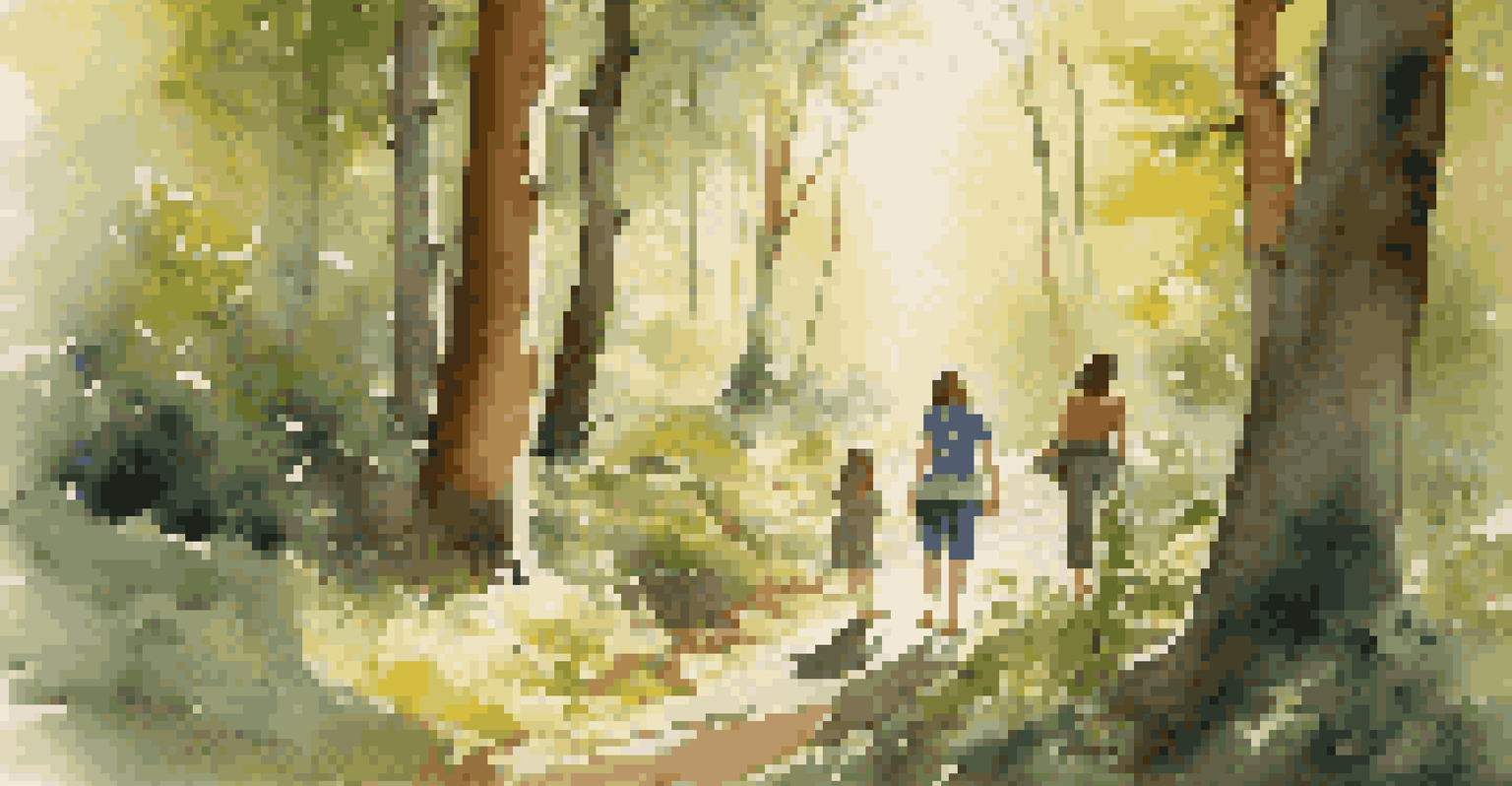Nature Scavenger Hunts: Engaging Learning Experiences

What is a Nature Scavenger Hunt?
A nature scavenger hunt is an outdoor activity where participants search for specific items in nature. Think of it as a treasure hunt, but instead of gold coins, the treasures are leaves, rocks, or even specific birds. This engaging experience encourages exploration and curiosity about the environment, making it a fantastic learning tool for all ages.
In every walk with nature one receives far more than he seeks.
Participants typically receive a list of items to find, which can include anything from pine cones to unique flowers. This not only adds an element of excitement but also fosters teamwork and communication among friends or family members. As they search for these items, they often learn new things about their surroundings, deepening their connection to nature.
Moreover, these scavenger hunts can be tailored to different age groups, making them versatile for classrooms, family outings, or community events. They can range from simple checklists for younger children to more complex tasks for older participants, ensuring that everyone remains engaged and challenged.
Benefits of Nature Scavenger Hunts for Learning
Nature scavenger hunts provide rich learning experiences that go beyond the classroom. They promote observational skills as participants must carefully look for items in their environment. This kind of hands-on learning is not only enjoyable but also incredibly effective, as it caters to various learning styles and preferences.

Additionally, these hunts can enhance critical thinking skills. Participants often have to problem-solve to find items on their list, especially if they encounter unexpected challenges, like weather changes or tricky terrains. This encourages them to think creatively and adapt their strategies, skills that are invaluable in everyday life.
Nature Scavenger Hunts Explained
A nature scavenger hunt is an engaging outdoor activity where participants search for specific natural items, enhancing their connection to the environment.
Furthermore, engaging with nature in this way fosters a sense of stewardship and appreciation for the environment. As participants discover different elements of nature, they become more aware of ecological relationships and the importance of preserving our planet. This can inspire future generations to become more environmentally conscious.
How to Organize a Nature Scavenger Hunt
Organizing a nature scavenger hunt is relatively simple and can be done in a few easy steps. Start by selecting a location that is safe and accessible, whether it's a local park, nature reserve, or even your backyard. Consider the age and interests of the participants when planning the route and the items to be found.
The earth has music for those who listen.
Next, create a scavenger hunt list that includes a mix of common and unique items to keep it exciting. You can also incorporate educational elements by adding specific questions about the items or their ecological significance. For example, instead of just listing 'oak leaves,' you might ask participants to identify which type of oak tree it came from.
Finally, set clear rules and time limits, and encourage participants to work in teams. This not only fosters collaboration but also adds a competitive edge to the hunt. Remember to celebrate everyone's efforts at the end, perhaps with small prizes or certificates, to enhance the overall experience.
Creating a Themed Scavenger Hunt
Themed scavenger hunts can add an extra layer of fun and engagement. For example, you might focus on a specific season, like spring, where participants search for blooming flowers and budding trees. Alternatively, you could choose a wildlife theme, prompting participants to find animal tracks or bird species, making the experience both educational and exciting.
Incorporating storytelling into your theme can also enhance the experience. For instance, you could create a narrative about explorers searching for rare plants, encouraging participants to immerse themselves in the adventure. This can spark their imagination and make the hunt feel even more meaningful.
Learning Benefits of Scavenger Hunts
These hunts promote observational skills and critical thinking, providing hands-on learning experiences that cater to various age groups.
Themes can also be aligned with local ecology or cultural relevance, which helps participants connect personally with the environment. By making the scavenger hunt unique and relevant, you create a memorable experience that participants are likely to cherish.
Engaging Different Age Groups
One of the great advantages of nature scavenger hunts is their adaptability for various age groups. For younger children, you might create a simple checklist with pictures of items to find, making it accessible and easy to understand. This visual aid helps them recognize items while developing their vocabulary and observational skills.
For older kids and adults, you can introduce more complex tasks such as identifying specific species, taking photographs, or even documenting their findings in a journal. This adds depth to the experience and challenges participants to engage critically with their surroundings.
By tailoring the scavenger hunt to meet the needs of different age groups, you ensure that everyone can participate and enjoy the experience. It becomes a shared adventure that fosters relationships and encourages learning across generations.
Incorporating Technology into Scavenger Hunts
Technology can enhance nature scavenger hunts in fun and innovative ways. Using mobile apps, participants can identify plants, animals, and insects in real time, enhancing their learning experience. This interaction not only makes the hunt more engaging but also introduces them to valuable tools they can use in their future explorations.
Additionally, you can create a digital scavenger hunt where participants use GPS coordinates to find items or complete challenges. This adds an exciting twist and allows for a broader range of locations to explore, making the experience more adventurous.
Organizing an Exciting Scavenger Hunt
With careful planning, including a themed approach and safety measures, you can create a memorable and educational experience for all participants.
However, it's essential to balance technology use with the natural experience. Encourage participants to put their devices away periodically to truly connect with their surroundings. This blend of tech and nature can create a unique and memorable outing.
Safety Tips for Nature Scavenger Hunts
Safety should always be a priority when organizing a nature scavenger hunt. Before heading out, make sure to assess the area for potential hazards, such as uneven terrain or wildlife encounters. Educating participants about the local flora and fauna, including which plants to avoid, can help prevent accidents and ensure everyone stays safe.
It’s also wise to establish clear boundaries for where participants can roam. This not only helps keep everyone within a safe distance but also maintains the integrity of the environment. Setting guidelines about respecting wildlife and not disturbing natural habitats is crucial for fostering a sense of responsibility.

Lastly, ensure that everyone is dressed appropriately for the conditions, whether it’s wearing sturdy shoes or bringing along water bottles. By preparing for potential challenges, you can create a fun and safe environment for everyone involved, allowing them to focus on enjoying the scavenger hunt.